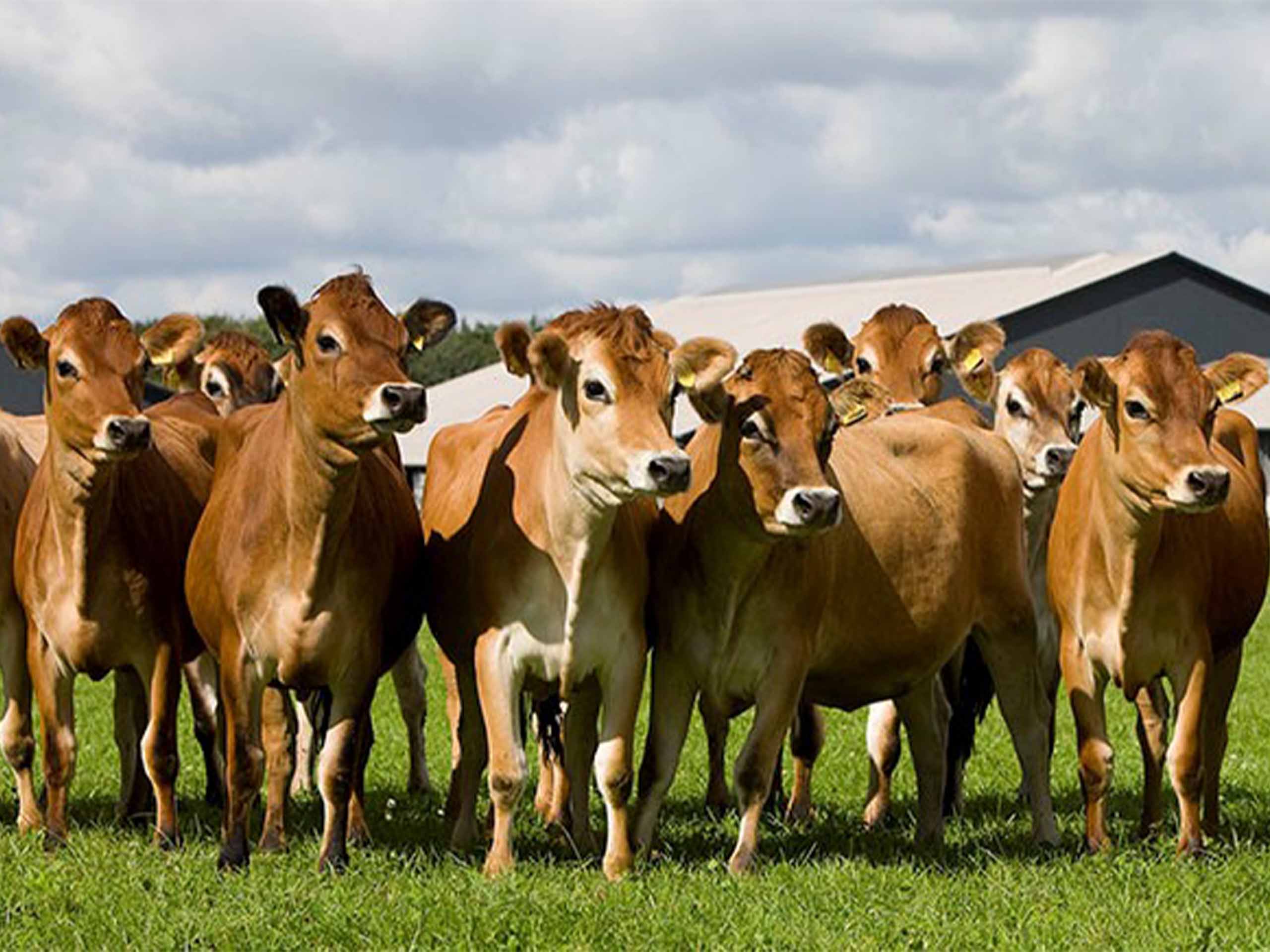HEREFORD
Hereford ırkının, yüzyıllar önce Roma Britanyası'nda var olan küçük kırmızı sığırların soyundan geldiğine inanılmaktadır. Tipik olarak beyaz benekli kırmızıdırlar ve Hereford boğalarının doğurduğu buzağılar neredeyse her zaman, birçok çiftçinin pazarda kolay tanımlama için avantajlı bulduğu ayırt edici beyaz kafaya sahiptir.
Seçici yetiştirme uygulamaları nedeniyle birçok Hereford sığırı doğal olarak boynuzludur ve bu da boynuzsuzlaştırma ile ilgili çaba ve stres konusunda endişe duyan çiftçiler için faydalı olabilir. Bu özellikle boynuzlu hayvanların diğer hayvanlarla yakın mesafede tutulacağı durumlarda önemlidir.
Ortalama olarak Hereford boğaları yaklaşık 1.200 kg ağırlığındayken, inekler tipik olarak yaklaşık 800 kg ağırlığındadır. Bu cins, İngiltere ve İrlanda'da olduğu gibi havanın nemli olduğu ve aşırı sıcaklık dalgalanmalarının yaşanmadığı ılıman iklimlerde gelişir.
Hereford sığırları mükemmel annelik içgüdüleriyle bilinir ve yırtıcı hayvanların bulunabileceği alanlarda buzağıları için güçlü bir koruma sağlar. Bu, yeni buzağıların güvenliği konusunda endişelenen çiftçiler için avantajlı olabilir, ancak koruyucu barajların ziyaretçilere karşı agresif davranışları bazen risk oluşturabilir. Cinsi ne olursa olsun boğalara her zaman dikkatli davranılmalıdır. Daha fazla rehberlik için Boğa Güvenliği makalemize bakın.
Orijinal tür olarak kabul edilen Geleneksel Hereford, genetik öneme sahip bir 'azınlık' ırkı olarak sınıflandırılmakta ve genlerinin gelecek nesiller için korunması gerektiğinin altını çizmektedir.
Bu sığırların uzun bir ömrü vardır ve bu da çiftçiler için sürü değiştirme maliyetlerini azaltmaya yardımcı olur. Herefordlar erken olgunluk ve yüksek doğurganlık gibi arzu edilen özellikleriyle bilinir. Gebelik süreleri, kendi boyutlarındaki sığırlar için ortalamadan daha kısadır, bu da İrlandalı çiftçilerin gebelikleri yönetmesini kolaylaştırır ve böylece ilgili maliyetleri düşürür. Irkın buzağı ölüm oranı da düşüktür, bu da buzağılama komplikasyonları konusunda endişe duyan çiftçiler için güven vericidir. Bununla birlikte, Herefordlar vajinal prolapsusa duyarlı olabilir ve bu da buzağılama sırasında zorluklara yol açabilir. İyileştirilmiş beslenme, prolapsus vakalarının azalmasıyla bağlantılıdır, ancak herhangi bir sorun ortaya çıkarsa bir veterinere danışmak çok önemlidir.
Hereford inekleri, ideal olmayan yem koşullarında bile sürekli olarak yılda bir buzağı doğurur. Gebe kalma genellikle yaklaşık iki yaşından itibaren gerçekleşir.
Hereford sığırlarının mizacı genellikle uysal ve yumuşak başlıdır, bu da sürü yönetimini kolaylaştırır, bu da özellikle yalnız çalışan çiftçiler için faydalıdır. Koçlar ayrıca sağım kolaylığı ile bilinir ve bu da süreci basitleştirir.
Bununla birlikte, Herefordlar bazı genetik sorunları miras alabilir. Göz kanseri daha güneşli bölgelerdeki sığırlarda yaygındır, ancak daha düşük güneş radyasyonu seviyeleri nedeniyle İrlanda sığırları için önemli bir tehdit oluşturmayabilir. Güneş yanığı İrlanda'daki Herefordlar için bir sorun olabilir, özellikle de yoğun yaz güneşinden etkilenebilen soluk memelerinde.
İrlandalı çiftçiler, Hereford sığır eti için prim fiyatları sunan premium sığır eti programları olan ülke çapındaki çeşitli Sertifikalı Hereford Programlarından yararlanmaktadır. Bu, ırkın Bord Bia tarafından 'yüksek kalite' olarak pazarlanmasını sağlar.
Hereford sığırları için ortalama terbiye yaşı yaklaşık 18 ila 20 aydır. Teagasc'a göre, aynı miktarda yem, diğer yaygın melezlerin sadece 50 hayvanına kıyasla yaklaşık 75 Hereford sığırı için mükemmel sığır eti verimi sağlayabilir. Herefordlar yem bazlı diyetleri verimli bir şekilde kasa dönüştürür, kolayca kilo alır ve yüksek kaliteli karkaslar üretir.
Daha küçük işletmelere sahip çiftçiler için Herefordlar özellikle uygun olabilir. Teagasc, Hereford melezleri ile ilkbahar sistemi için her yıl satılan hayvan başına 1 dönüm stoklama oranı önerirken, bu oran kıta melezleri için 1,2 dönümdür.










